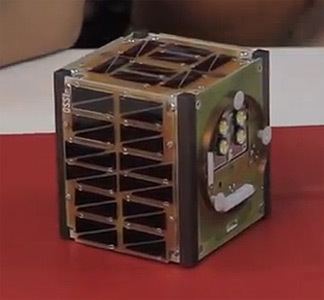SATCAT no. 39131 Inclination 64.9° Period 1.5 hours Rocket Soyuz-2 | COSPAR ID 2013-015B Manufacturer Home made Inclination 64.9° Launch date 19 April 2013 | |
 | ||
Similar Drag and Atmospheric Neutral D, USA‑243, AAUSAT3, NEE‑01 Pegaso, Progress M‑19M | ||
How ossi 1 satellite works general overview
OSSI-1 (standing for Open Source Satellite Initiative-1) is an amateur radio satellite launched in 2013 with Bion-M No.1. Bion-M was launched into orbit at 10:00 UTC on April 19, 2013, from Baikonur Cosmodrome, Kazakhstan, with 6 small satellites, including OSSI-1. OSSI-1 detached from Bion-M at 16:15 UTC.
Contents
OSSI-1 is the pet project of Hojun Song, a Korean artist and amateur radio operator. He worked on it for seven years, designing and building the satellite using off-the-shelf components rather than equipment that had been certified for use in space. The most expensive aspect of the project was the launch, which cost US$100,000.
OSSI-1 is a 1U CubeSat with 100mm sides, weighing 950g. It uses an arduino microcontroller, a lithium-ion battery and a J mode UHF/VHF transceiver.
The satellite has a Morse code beacon transmitting "OS0 DE OSSI1 ANYOUNG" on 145.980 MHz and 4 LED lights with a total power of 44 watts to flash Morse code messages, using an open protocol. The project developers announced on 24 April 2013 that they had not yet received a signal from the satellite and were concerned that the Two-line element set they were using to locate the satellite might be wrong.
According to Korean amateur radio organisation KARL, Hojun Song had some difficulties launching a satellite as a private individual, connected to registering with space bodies and being allocated broadcast frequencies by the international telecoms regulator the ITU. A law requires knowledge of the launch date two years in advance which he was not able to give as he was sharing a launch with other experimental satellites. The amateur radio bands are nearly full but to use other bands would require more expensive specialist equipment and technical skills. In 2011 OSSI-1 signed a contract with a French nano satellite company for a turnkey launch service in order to secure a launch date.
The satellite re-entered the Earth's atmosphere on 30 June 2013.
